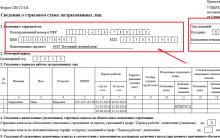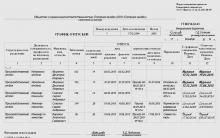The calculation of wages at any commercial or state enterprise occurs in accordance with the legislative acts in force at a given time. Its amount depends on the official salary prescribed in the employment contract, the hours worked during a certain period and other details. The amount due for payment is calculated by the accountant on the basis of a number of documents.
What is included in the calculation?
To date, two types of payment are most often practiced:
- Time . The first provides for a salary determined by the contract for the hours worked - an hour, a day, a month. Often a monthly rate is practiced. In this case, the total amount depends on the time worked during a certain period of time. It is mainly used in the calculation of salaries for employees who do not depend on the amount of the created product - accountants, teachers, managers.
- piecework . Depends on the amount of product created for a certain period. Often used in factories. It has several subspecies, which we will consider a little later.
So, time wages provide that the head of the enterprise or other official is required to maintain and fill out a time sheet. It is issued in the form No. T-13 and is filled out daily.
It should note:
- the number of working hours worked during the day;
- exits "at night" - from 22:00 to 6:00;
- out of hours (weekends, holidays);
- omissions due to various circumstances.
Piecework payment provides for the presence of a route map or an order for a certain amount of work. In addition, the following are taken into account: sick leave, orders for bonuses, orders for the issuance of material assistance.
After hiring, each accountant must keep an analytical record of wages and record it in the form No. T-54. This is the so-called personal account of the employee. The data specified in it will be taken into account when calculating hospital payments, vacation and other types of benefits.
You can find out how vacation pay is calculated.

Calculation formula and examples
Hourly pay provides for remuneration according to the time worked and the salary of the employee.
It is calculated as follows:
For monthly salary:
ZP \u003d O * CODE / KD, where
- O - fixed monthly salary;
- CODE - days worked;
- CD is the number of days in a month.
For hourly/daily fixed salary:
ZP \u003d KOV * O, where
- ZP - wages excluding taxes;
- KOV - the amount of hours worked;
- O - salary per unit of time.
Consider an example:
Tatyana Ivanovna has a monthly salary of 15,000 rubles. There were 21 working days in a month, but since she took a vacation at her own expense, she worked only 15 days. In this regard, she will be paid the following amount:
15,000*(15/21)=15,000*0.71= 10,714 rubles 30 kopecks.
Second example:
Oksana Viktorovna works with a daily salary of 670 rubles. This month she worked 19 days. Her salary will be:
670 * 19 \u003d 12,730 rubles.
As you can see, the formula for calculating wages for this type of payment is very simple.
Piecework payment - how to calculate?
With piecework wages, the amount of work performed is paid. At the same time, prices are taken into account in the ratio of the volume of work.
With piecework wages, wages are calculated according to the following formula:
ZP \u003d RI * CT, where
- RI - prices for the manufacture of one unit;
- CT - the number of products produced.
Consider the following example:
Ivan Ivanovich produced 100 engines in a month. The cost of one engine is 256 rubles. Thus, in a month he earned:
100 * 256 \u003d 25,600 rubles.
piece-progressive
It is worth considering separately such a type of payment as piecework-progressive, in which the price depends on the number of products produced for a certain period.
For example, if an employee produces 100 engines per month, then he receives 256 rubles for each. If it exceeds this norm, that is, it produces more than 100 engines per month, the cost of each engine produced in excess of the norm is already 300 rubles.
In this case, earnings for the first 100 engines and separately for subsequent ones are considered separately. The amounts received are cumulative.
For example:
Ivan Ivanovich made 105 engines. His earnings were:
(100*256)+(5*300)=25,600+1,500= 28,100 rubles.
Other payment systems and their calculation
Depending on the specifics of the work, payment can be:
- chord . Often used when paying for the work of the brigade. In this case, the salary of the brigade as a whole is calculated and issued to the foreman. The workers divide the amount received among themselves according to the agreement existing in their brigade.
- Payment based on bonuses or interest . A bonus or commission system is applied to employees on whom the company's revenue depends (see also). Quite often it is applied to sales consultants, managers. There is a constant, fixed rate and a percentage of sales.
- shift work . The shift method of work provides for payment according to the employment contract - that is, by the time or for the amount of work performed. In this case, there may be interest allowances for difficult working conditions. For exits on non-working days, holidays, payment is calculated in the amount of at least one daily or hourly rate on top of the salary. In addition, an allowance is paid for the shift method of work from 30% to 75% of the monthly salary. The interest rate depends on the region in which the work takes place. For example, Ivan Petrovich works on a rotational basis. His monthly rate is 12,000 rubles, the allowance for work in this region is 50% of the salary (O). Thus, his salary will be 12,000 + 50% O \u003d 12,000 + 6,000 \u003d 18,000 rubles per month of work.
Payment for holidays and night shifts
When working in shifts, each shift is paid depending on the tariff rate of each shift. It is either established by an employment contract or calculated by an accountant.

At the same time, it should be borne in mind that weekends and holidays are paid at a higher rate - an increase in the rate by 20%. In addition, exits at night from 22:00 to 06:00 are also subject to a rate increase of 20% of the cost of an hour of work.
payroll taxes
When calculating wages, do not forget about taxes. Thus, the employer is obliged to pay 30% of the amount of calculated wages to the insurance premium fund.

In addition, employees are charged 13% of their wages in personal income tax. Let's take a look at how taxes are calculated.
First of all, the tax is charged on the entire amount of wages, except for cases in which there is a tax deduction. So, a tax deduction is calculated from the total amount of wages, and only then the tax rate is calculated on the resulting value.
The right to a tax deduction has a number of socially unprotected categories, the list of which is prescribed in article 218 of the Tax Code of the Russian Federation. These include:
- Veterans of the Great Patriotic War, invalids, whose activities were connected with nuclear power plants. The tax deduction is 3000 rubles.
- Disabled people, participants of the Second World War, military personnel - 500 rubles.
- Parents who are dependent on one or two children - 1,400 rubles.
- Parents who are dependent on three or more children - 3,000 rubles.
The last two categories are restricted. So, after the amount of wages received from the beginning of the calendar year reaches 280,000 rubles, the tax deduction is not applied until the beginning of the next calendar year.
Example:
Ivan Ivanovich's monthly salary was 14,000 rubles, since he worked for a full month. He received a disability while working at a nuclear power plant. Thus, his tax deduction will be 3,000 rubles.
The personal income tax is calculated for him as follows:
(14,000 - 3,000) * 0.13 = 1430 rubles. This is the amount that must be withheld when receiving wages.
Thus, he will receive in his hands: 14,000 - 1430 \u003d 12,570 rubles.
Second example:
Alla Petrovna is the mother of two minor children. Her salary is 26,000 per month. By December, the total amount of wages paid to her will be 286,000 rubles, therefore, no tax deduction will be applied to her.
Payment procedure and calculation of delays
According to all the same legislation, wages must be paid at least 2 times a month. Allocate an advance, which is issued in the middle of the month and the actual salary.

The advance payment averages from 40 to 50% of the total amount of payments, at the end of the month the rest of the payments are issued. Usually this is the last day of the month, if it falls on a weekend - the last working day of the month. In case of untimely calculation of wages, the employer is obliged to pay a fine.
In addition, compensation is provided for the employee, which is issued at his request and amounts to 1/300 of the rate for each day of delay.
Video: Simple payroll
Familiarize yourself with the basic nuances of calculating and calculating wages. An experienced accountant will tell you how to correctly calculate wages, depending on the wage system you choose.
The calculation of wages is made by an accountant on the basis of a number of documents. There are two main systems of remuneration: piecework and time. The most popular is the time-based wage system - it is quite simple and is used in most industries.











How to issue a power of attorney to represent the interests of an LLC to an individual?
How to apply for an IP: step by step instructions
Form of power of attorney to receive goods or material assets
The deadline for registering an individual entrepreneur in the tax
Business plan for a law firm: an example with calculations legal support for a business